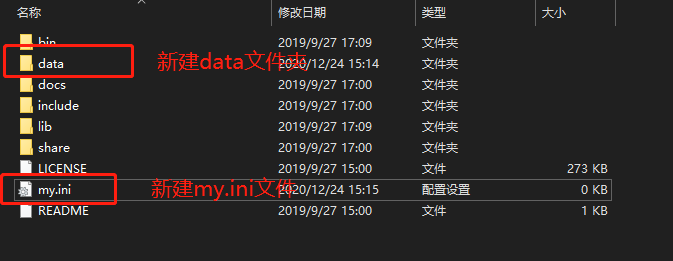配置文件的读取是每个程序必备的功能,配置文件的格式多种多样,例如:ini 格式、json 格式、xml 格式等。其中属 ini 格式最为简单,且应用广泛。
1.概述
配置文件的读取是每个程序必备的功能,配置文件的格式多种多样,例如:ini 格式、json 格式、xml 格式等。其中属 ini 格式最为简单,且应用广泛。
2.ini 格式语法
下面让我们来看一个简单的示例,假设我们有一个配置文件 demo.cfg,它的内容如下所示。
[server]ip = 127.0.0.1port = 8088
复制代码
上面的配置内容中,有一个 server 的配置节,在这个配置节里有两个配置项,它们分别是 ip 和 port,ip 的值为 127.0.0.1,port 的值为 8088。
3.配置读取
知道了 ini 格式语法之后,就可以根据语法规则来读取配置文件内容了,春哥这里实现了一个非常精简易用的版本,源代码文件 config.hpp 的内容如下。
#pragma once
#include <fstream>#include <functional>#include <string>#include <unordered_map>
namespace Config {class Ini { public: void Dump(std::function<void(const std::string&, const std::string&, const std::string&)> deal) { auto iter = cfg_.begin(); while (iter != cfg_.end()) { auto kv_iter = iter->second.begin(); while (kv_iter != iter->second.end()) { deal(iter->first, kv_iter->first, kv_iter->second); ++kv_iter; } ++iter; } } bool Load(std::string file_name) { if (file_name == "") return false; std::ifstream in; std::string line; in.open(file_name.c_str()); if (not in.is_open()) return false; while (getline(in, line)) { std::string section, key, value; if (not parseLine(line, section, key, value)) { continue; } setSectionKeyValue(section, key, value); } return true; } void GetStrValue(const std::string& section, const std::string& key, std::string& value, std::string default_value) { value = default_value; if (cfg_.find(section) == cfg_.end()) { return; } if (cfg_[section].find(key) == cfg_[section].end()) { return; } value = cfg_[section][key]; } void GetIntValue(const std::string& section, const std::string& key, int64_t& value, int64_t default_value) { value = default_value; if (cfg_.find(section) == cfg_.end()) { return; } if (cfg_[section].find(key) == cfg_[section].end()) { return; } value = atol(cfg_[section][key].c_str()); }
private: void ltrim(std::string& str) { if (str.empty()) return; size_t len = 0; char* temp = (char*)str.c_str(); while (*temp && isblank(*temp)) { ++len; ++temp; } if (len > 0) str.erase(0, len); } void rtrim(std::string& str) { if (str.empty()) return; size_t len = str.length(); size_t pos = len; while (pos > 0) { if (not isblank(str[pos - 1])) { break; } --pos; } if (pos != len) str.erase(pos); } void trim(std::string& str) { ltrim(str); rtrim(str); } void setSectionKeyValue(std::string& section, std::string& key, std::string& value) { if (cfg_.find(section) == cfg_.end()) { std::unordered_map<std::string, std::string> kv_map; cfg_[section] = kv_map; } if (key != "" && value != "") cfg_[section][key] = value; } bool parseLine(std::string& line, std::string& section, std::string& key, std::string& value) { static std::string cur_section = ""; std::string nodes[2] = {"#", ";"}; //去掉注释的内容 for (int i = 0; i < 2; ++i) { std::string::size_type pos = line.find(nodes[i]); if (pos != std::string::npos) line.erase(pos); } trim(line); if (line == "") return false; if (line[0] == '[' && line[line.size() - 1] == ']') { section = line.substr(1, line.size() - 2); trim(section); cur_section = section; return false; } if (cur_section == "") return false; bool is_key = true; for (size_t i = 0; i < line.size(); ++i) { if (line[i] == '=') { is_key = false; continue; } if (is_key) { key += line[i]; } else { value += line[i]; } } section = cur_section; trim(key); trim(value); return true; }
private: std::unordered_map<std::string, std::unordered_map<std::string, std::string>> cfg_;}; // ini格式配置文件的读取} // namespace Config
复制代码
Config 命名空间下实现了 Ini 配置读取类。Load 函数用于加载配置文件内容,GetStrValue 函数和 GetIntValue 函数用于获取配置项值并支持设置默认值,Dump 函数用于遍历配置文件的内容。由于在解析过程中需要删除字符串中的前导和后导空白符,因此我们还实现了 trim 函数用于删除前导和后导空白符。
这里重点讲解一下 Load 函数的逻辑:每次从配置文件中读取一行,然后先去掉注释的内容,接着再判断剩余的内容是一个 section 头配置,还是 section 下的 key-value 配置,再走不同的解析分支。
4.demo 示例
以上面配置文件 demo.cfg 内容的读取为例,示例代码如下。
#include <iostream>
#include "config.hpp"
int main(int argc, char *argv[]) { Config::Ini ini; ini.Load("./demo.cfg"); ini.Dump([](const std::string §ion, const std::string &key, const std::string value) { std::cout << "section[" << section << "],key[" << key << "]->value[" << value << "]" << std::endl; }); return 0;}
复制代码
5.自动生成读取代码
如果这次分享的内容到上面 demo 示例之后就进入尾声的话,那么春哥就太过于标题党了。假设我们的程序有几十项配置内容,如果每一项采用 GetIntValue 函数或者 GetStrValue 函数来读取,那么编码工作量还是不小的,并且也容易出错,那么怎么做到提效呢?
其实提效方案并不难想到,我们可以自动生成读取配置项的代码,并生成具体业务配置读取类。下面我们举一个例子,假设我们有一个配置文件 mysvr.cfg,它的内容如下。
[server]ip = 127.0.0.1port = 8080
[pool]conn_pool_size = 100
复制代码
我们手动编写了业务配置读取类代码文件 MySvrCfg.hpp,它的内容如下。
#include <string>
#include "config.hpp"
class MysvrCfg { public: bool Load(std::string file_name) { Config::Ini ini; if (not ini.Load(file_name)) { return false; } ini.GetIntValue("pool", "conn_pool_size", conn_pool_size_, 0); ini.GetIntValue("server", "port", port_, 0); ini.GetStrValue("server", "ip", ip_, "");
return true; } int64_t conn_pool_size() { return conn_pool_size_; } int64_t port() { return port_; } std::string ip() { return ip_; }
public: int64_t conn_pool_size_; int64_t port_; std::string ip_;};
复制代码
我们可以发现上面的代码完全可以自动生成。「我们先读取配置的内容,然后使用配置文件的内容作为元数据驱动生成这个 MySvrCfg.hpp 的内容」。
自动生成业务配置读取类的脚手架工具代码文件 configtool.cpp,它的内容如下。
#include <iostream>#include <regex>#include <string>
#include "MysvrCfg.hpp"
using namespace std;
int genCfgReadFile(Config::Ini &ini, string file_name) { string prefix = ""; for (size_t i = 0; i < file_name.size(); i++) { if (file_name[i] == '.') break; if (prefix == "") { prefix = toupper(file_name[i]); } else { prefix += file_name[i]; } } string class_name = prefix + "Cfg"; string output_file_name = prefix + "Cfg.hpp"; ofstream out; out.open(output_file_name); if (not out.is_open()) { cout << "open " << output_file_name << " failed." << endl; return -1; } string cfg_read_content; string class_func_content; string class_member_content; ini.Dump([&cfg_read_content, &class_func_content, &class_member_content](const string §ion, const string &key, const string &value) { regex integer_regex("[+-]?[0-9]+"); if (regex_match(value, integer_regex)) { // 整数 cfg_read_content += " ini.GetIntValue("" + section + "", "" + key + "", " + key + "_, 0);\n"; class_func_content += " int64_t " + key + "() { return " + key + "_; }\n"; class_member_content += " int64_t " + key + "_;\n"; } else { cfg_read_content += " ini.GetStrValue("" + section + "", "" + key + "", " + key + "_, "");\n"; class_func_content += " std::string " + key + "() { return " + key + "_; }\n"; class_member_content += " std::string " + key + "_;\n"; } }); // string content = R"(#include <string>
#include "config.hpp"
class )" + class_name + R"( { public: bool Load(std::string file_name) { Config::Ini ini; if (not ini.Load(file_name)) { return false; })" + cfg_read_content + R"( return true; })" + class_func_content + R"( public:)" + class_member_content + "};"; out << content; return 0;}
int readDemoCfg() { MysvrCfg cfg; cout << "usage: configtool cfg_file_name" << endl; cout << "read demo cfg mysvr.cfg" << endl; cfg.Load("./mysvr.cfg"); cout << "ip = " << cfg.ip() << endl; cout << "port = " << cfg.port() << endl; cout << "conn_pool_size = " << cfg.conn_pool_size() << endl; return 0;}
int main(int argc, char *argv[]) { if (argc == 1) { return readDemoCfg(); } if (argc != 2) { cout << "usage: configtool mysvr.cfg" << endl; return -1; } Config::Ini ini; string file_name = argv[1]; if (not ini.Load(file_name)) { cout << "load " << file_name << " failed." << endl; return -1; } return genCfgReadFile(ini, file_name);}
复制代码
在 configtool 脚手架工具中,「我们先使用 Config::Ini 类对象读取了配置文件的内容,然后遍历配置文件的内容,生成业务配置读取类中动态变化的代码内容,最后使用模版生成最终的代码」。
脚手架工具 configtool 的使用也非常简单,直接把配置文件名作为命令行参数传入即可,如果执行 configtool 时不携带任何参数则会使用生成的类 MysvrCfg 来读取上面的配置文件 mysvr.cfg 的内容。












评论